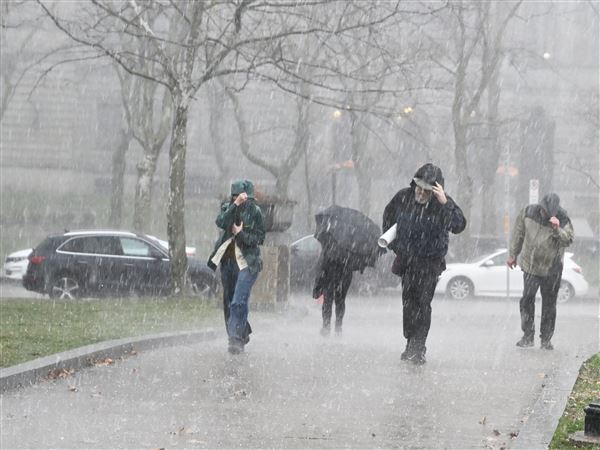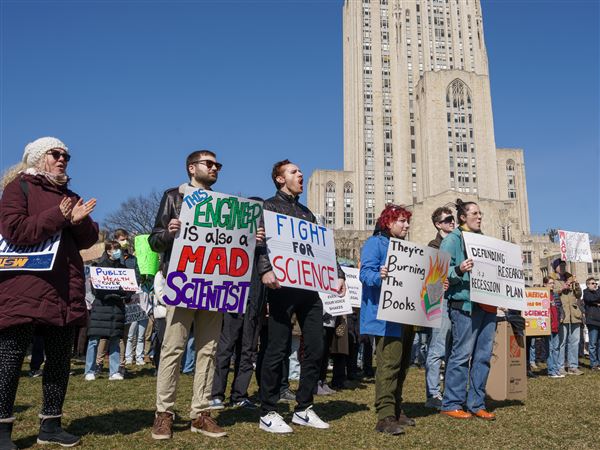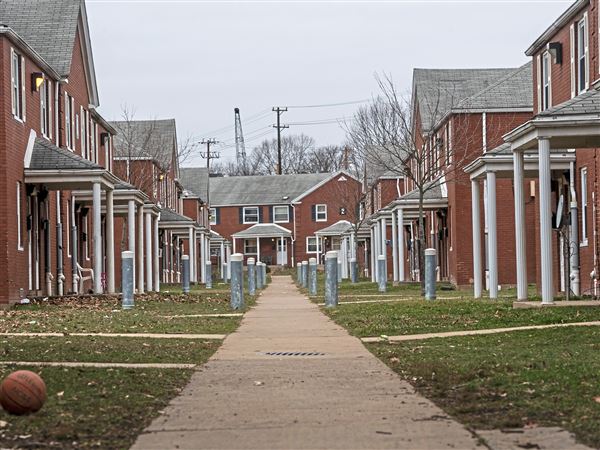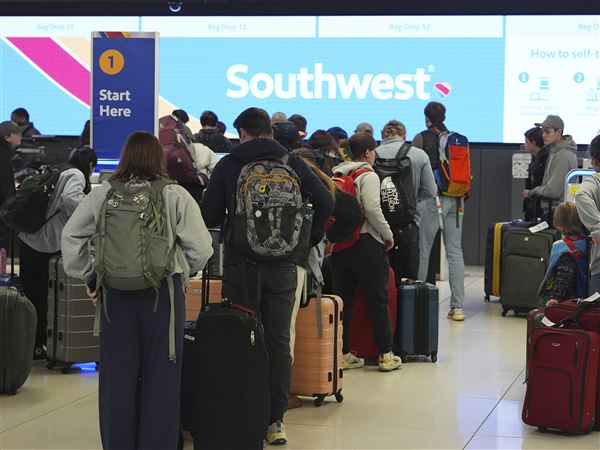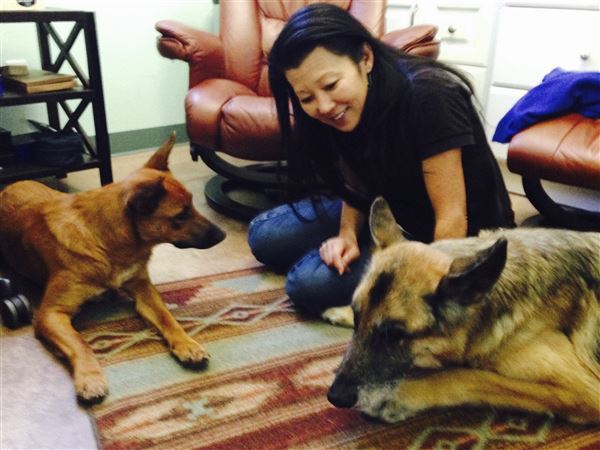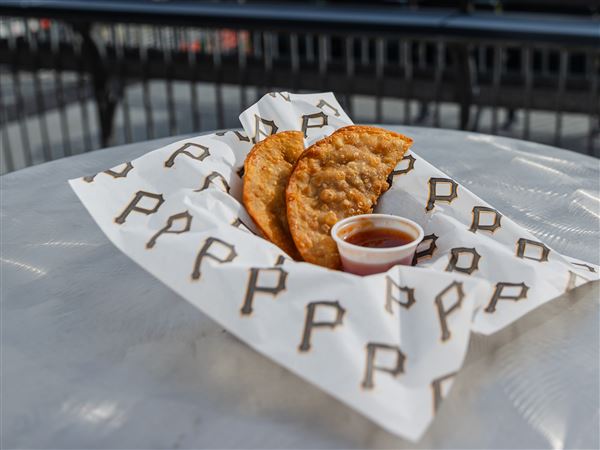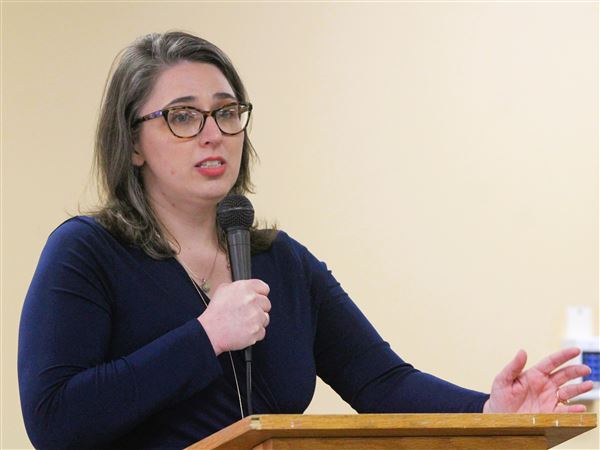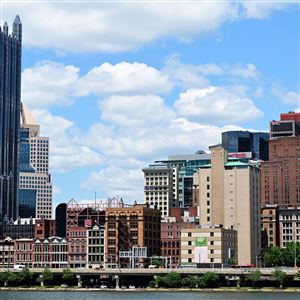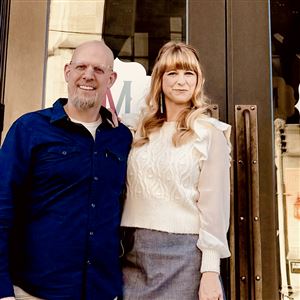MANILA, Philippines — Seventy-one-year-old President Donald Trump is holding up just fine as he nears the end of his grueling five-nation trip to Asia. And he wants you to know it.
“A lot of people said it’s almost physically impossible for someone to go through 12 days,” Trump told reporters aboard Air Force One during the sixth of his eight flights to, from and around Asia. He was happy to report he’s beaten the odds: “Anybody that took the bet, pick up your money, OK?”
Trump’s trip, the longest Far East itinerary for a president in a generation, was seen as test of stamina for a president with a strong aversion to long stretches away from his own bed. His age, combined with the demanding itinerary — five countries, three summits and a long string of ceremonies, dinners and meetings— had raised concerns Trump would grow grouchy and distracted.
But aside from reviving questions about Russian election meddling in the 2016 election and weekend tweets taunting North Korean’s Kim Jong Un with schoolyard jabs, Trump has largely stayed on message and been unusually engaged, according to his traveling companions.
The dangers of getting out of sync are legend: President George H.W. Bush vomited and fainted at a state dinner in Tokyo in January 1992.
Learning from past mistakes, the White House took steps to keep Trump relaxed and comfortable. He was gently encouraged to nap, though aides said it was unclear how much he’d actually slept. Staffers made sure he was able to watch American cable news on the road and that he could tweet even in China, where Twitter is banned for locals. They also worked to provide Trump, a notoriously picky eater, with acceptable foods as he ran the gauntlet of local cuisine at state dinners across Asia.
They had help from Trump’s hosts.
For his first meal in Asia, Japanese Prime Minister Shinzo Abe served Trump a hamburger made with American beef. Chinese officials told White House counterparts that at the state dinner in Beijing, they’d served “westernized” versions of traditional dishes. Additionally, Trump tended to eat whenever he was onboard Air Force One, where he had full run of the kitchen.
There were a handful of moments when Trump appeared to drag, including during a lengthy interpretive hip-hop performance in Manila and an extended toast in Vietnam that left journalists yawning. Trump also looked somewhat sour as he sat around a table with Southeast Asian leaders in Manila, arms folded.
The president also was “very frustrated” when his secret trip to the heavily fortified demilitarized zone between North and South Korea had to be scuttled due to fog, according to White House press secretary Sarah Huckabee Sanders. Though he eventually deferred to military aides and Secret Service personnel who said a DMZ landing would be too dangerous, Trump at one point declared they should make a go of it anyway and later loudly cursed that he was only five minutes from the border when Marine One had to turn back, according to two White House officials not authorized to speak publicly about private conversations.
By and large, though, Trump appeared upbeat, reveling in the pomp and pageantry of lavish welcome ceremonies and state dinners.
When a dinner in Vietnam dragged late, Trump waved off aides who tried to arrange an early exit. Aides said he didn’t complain when he was seated near dignitaries who spoke little English.
Trump mostly avoided gaffes, although he did struggle with a complicated, cross-body handshake among summit leaders in Manila. And he remained attentive during lengthy diplomatic rituals, including an hour-plus tour of a museum in Beijing’s Forbidden City.
Trump did appear somewhat less enthused during the second half of the trip, when the grandeur of military parades and glitzy banquets gave way to glad-handing at summits.
On at least two occasions — leaving Danang and leaving Hanoi, Air Force One flew a circuitous route to kill time because the president had skipped town well ahead of schedule and an early arrival would have upended arrival ceremonies or other arrangements.
Trump has long made stamina central to his identity as a politician, boasting during the 2016 election about his endurance and mocking opponents for being low-energy candidates. But this trip’s schedule would be grueling for any president, particularly one who boasts about sleeping little and exercising less.
The president is a notorious homebody who groused to advisers that his other major international trip, a nine-day journey across the Middle East and Europe in May, was too long. Originally, aides presented him with the option of taking two shorter trips to Asia. But Trump decided to jam the two itineraries together.
“What I didn’t want to do was come back,” he explained to journalists aboard Air Force One.
Even then, however, the already expansive itinerary grew. Initially, Trump was only going to be in Vietnam for a summit in Danang, but Vietnam’s leaders pressed upon the White House to also make a state visit to Hanoi.
And a plan to give Trump a day of relaxation and meetings in Hawaii on the way back to Washington was replaced with an extra day in the Philippines to attend the East Asia Summit. The result: what White House chief of staff John Kelly jokingly referred to as “a death march through Asia” as he boarded Air Force One at the start of the trip.
Trump warmed to the itinerary as it approached, growing fond of noting aloud how long it was, according to four White House officials and outside advisers. He remarked more than once to aides that he was “setting a record.”
Trump also applauded his traveling press corps for managing to keep up, telling reporters in Manila on Monday: “You were able to hang in there. I’m very proud of you.”
Then he teased, “It’s not finished. You have one day left.”
First Published: November 14, 2017, 7:45 a.m.
